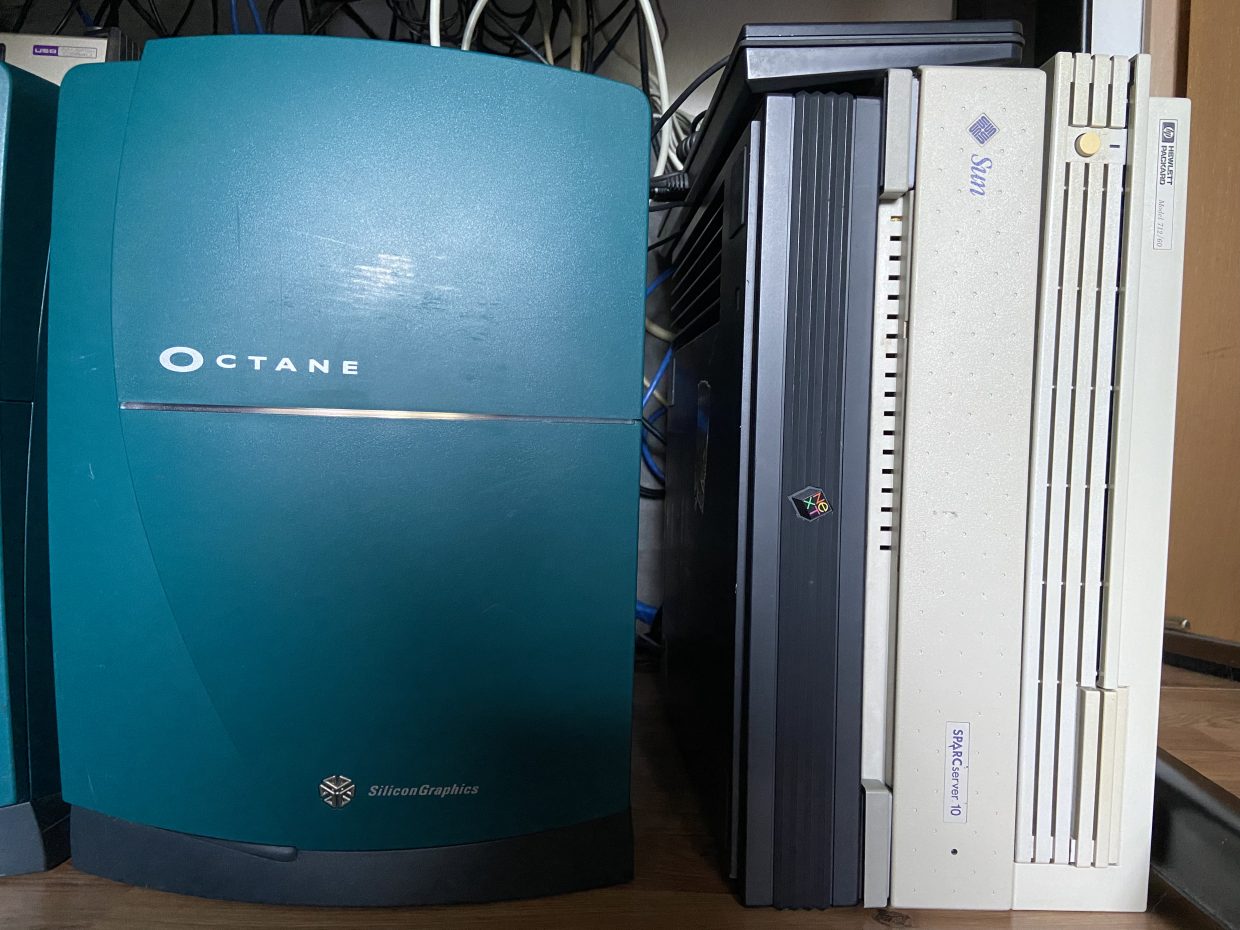This part of my vintage computer collection focuses on UNIX workstations from around the early to mid 1990s. Back then diversity still was a topic in the computer industry, both in the professional segment as well in the private / hobbyist area.
Amiga, Atari and Acorn were the names that were affordable to private users in that time with IBM PCs being used mostly in offices.
Professionals in science and engineering demanded higher specifications both in terms of processor and graphics capabilities which is where the so called workstations come in:
A workstation is a special computer designed for technical or scientific applications. Intended primarily to be used by a single user, they are commonly connected to a local area network and run multi-useroperating systems.
Wikipedia
These machines were much more expensive than mainstream computers due to special hardware and relatively low production volumes. Several vendors were competing in the workstation market, my collection currently has products from these brands (of course there were many more, such as DEC, Data General, IBM, …):
- Silicon Graphics – Octane (CPU: MIPS R12000 CPU, OS: IRIX 6.5.30)
- Sun Microsystems – Sparcstation 10 (CPU: Supersparc, OS: Solaris 7)
- NeXT – Nextstation (CPU Motorola 68040, OS: Nextstep)
- Hewlett-Packard – hp9000 712/60 (CPU: 7100LC, OS: Nextstep, hp-ux 9)
I selected these particular boxes either because I always wanted them (SGI, NeXT) or because I used them in the workplace many years ago and learned basic IT engineering skills including UNIX and C on them (Sun, HP). The hp 9000 and the Sparcstation 10 are somewhat special also as they officially supported NEXTSTEP as an alternative operating system. In particular on the hp 9000 that OS just flys and is a joy to use. I believe the 712/60 was explicitly designed by HP for NEXTSTEP and there were rumors of NeXT wanting to move to HP hardware when they turned to being a software company only.
My objective is to keep them in good working condition and to use them with (more or less) period accurate original operating systems. That requires restoration work in some cases and learning the quirks of vintage software. I however do not see a point in installing Linux on any of these boxes as that can be had much more easily on commodity hardware.
